15 Shade-Loving Perennials to Brighten Up Your Garden
From partial to full shade, these perennial plants and flowers will thrive in the dimly lit areas of your garden.
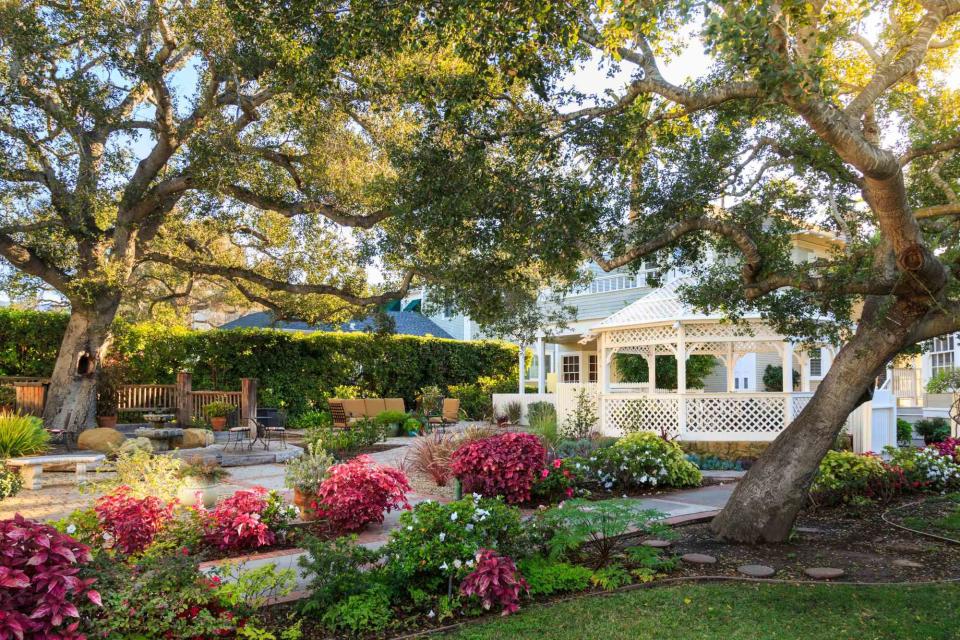
When spring arrives, many gardeners look forward to seeing their perennials return for another year. The blooms put on a beautiful show that adds seasonal interest to your landscape and attracts essential pollinators. But if you've hesitated when it comes to planting perennials in your own garden because it gets little sunlight, don't wait for another season. There are plenty of perennials that prefer partial or full-shade conditions—and their blooms and foliage are just as stunning as the perennials that love to sunbathe.
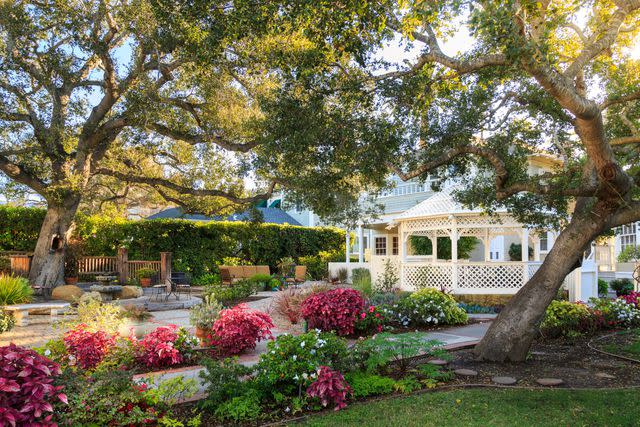
Related: 13 Full-Sun Spring Perennials to Plant for a Gorgeous Flower Garden
Hosta
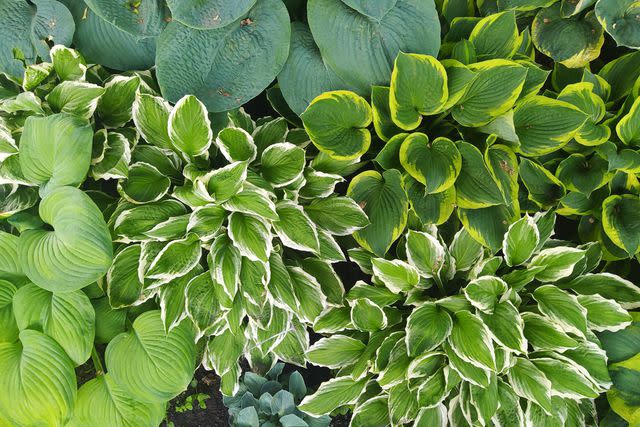
Known for its beautiful, bold leaves, hosta forms small, lily-shaped blooms that come in white or purple hues. "There are countless variegated forms with perfect markings to unusual streaking," says Adrienne Roethling, garden director for Paul J. Ciener Botanical Garden. "Flower scapes arise from a rosette of leaves and flower in summer for several weeks." The perennials comes in a variety of shapes and sizes, so you can add a mix to your shady garden.
Zones: 3 to 9
Size: 18 to 24 inches tall
Growing Conditions: Part shade; rich, well-drained soil.
Related: Our Guide to the USDA Gardening Zones—Plus, the Best Plants to Grow in Your Region
Hellebore Onyx Odyssey
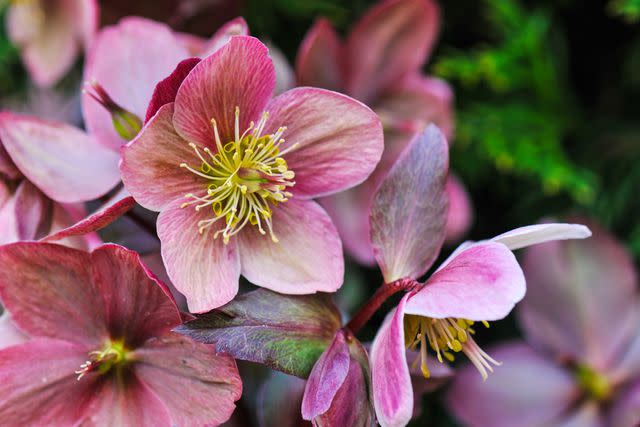
A gorgeous evergreen that forms beautiful, double cup-shaped purple to black blooms, this hellebore variety grows in a bushy, upright clump. "Black flowers are often hard to photograph but are always stunning in-person," says Cat Meholic, co-founder of Women in Horticulture. "You can't go wrong with any hellebore, but the dark flowered forms add a sense of elegance to the spring garden."
Zones: 5 to 8
Size: 12 inches tall
Growing Conditions: Partial to full shade; rich soil.
Woodland Phlox
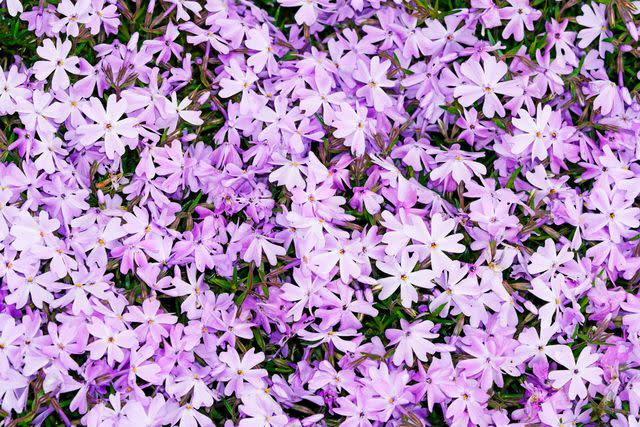
Many species of phlox can tolerate shade, but one of the most common varieties is woodland phlox. "A carpet of medium green, rounded leaves emerges in early spring, giving rise to 12 feet tall stalks producing blue or white, five-petaled flowers," says Roethling. "Typically, plants will go dormant by the heat of the summer."
Zones: 3 to 9
Size: Up to 12 inches tall
Growing Conditions: Part shade; average, well-drained soil.
Autumn Fern
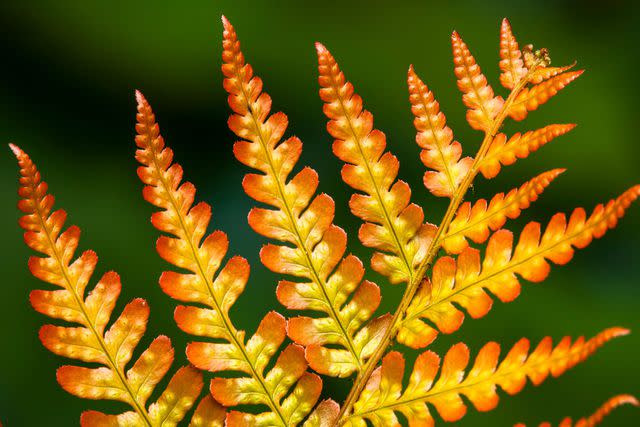
Autumn fern will add season-long interest to your yard. "Its upright, V-shaped habit makes it a great form in the garden, especially paired with a bold hosta," says Roethling. "The new leaves emerge in spring with a rusty colored hue. The fine textured leaves eventually turn all green before turning copper in fall."
Zones: 5 to 8
Size: 18 to 24 inches tall
Growing Conditions: Full shade; rich, well-drained soil.
Barrenwort Sandy Claws

Epimediums, or barrenwort, are a popular shade-loving perennial right now, but the Sandy Claws variety is a favorite because of its foliage that turns a gorgeous burgundy in the winter. "The leaf shape of epimedium adds a great texture to the garden, and then you get these fantastical cream-colored flowers in late spring. So much interest in one little plant," says Meholic.
Zones: 6 to 8
Size: 16 inches tall
Growing Conditions: Partial to full shade; average, well-drained soil.
Virginia Bluebells
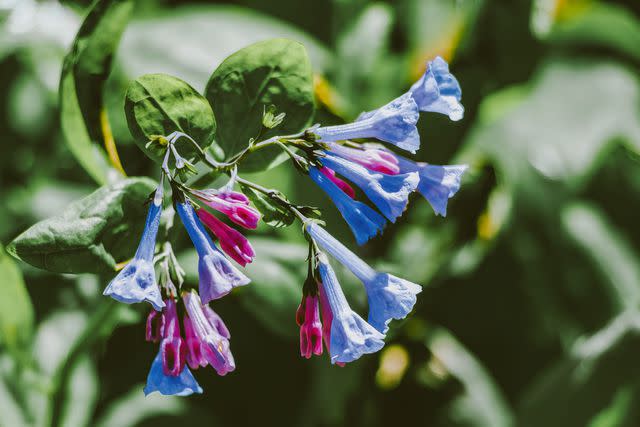
Virginia bluebells are native throughout the Eastern part of the U.S., and stretch west to the middle of the country. "They emerge in late winter with pale green, oval shaped leaves followed by stalks of blue, tubular flowers," says Roethling. "Flower buds open from pink to clear blue and will last for several weeks before going completely dormant."
Zones: 3 to 8
Size: Up to 24 inches tall
Growing Conditions: Full shade; moist, rich soil.
Japanese Painted Fern
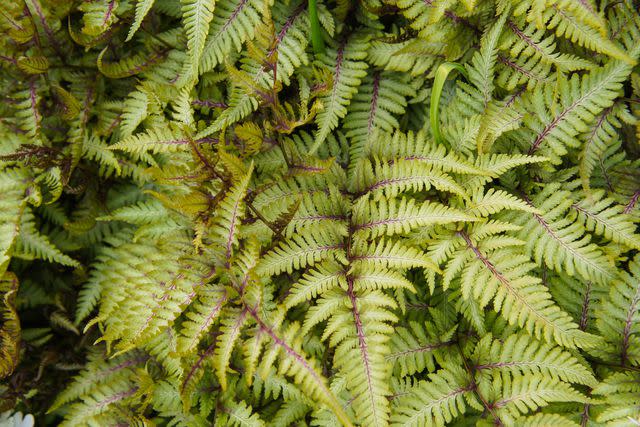
Many perennials will only offer interest for a few weeks, but Japanese painted fern can last the entire season when well cared for. The plant is a clump forming fern with arching stems. "New growth emerges in spring offering a silvery green tone with purple down the center," says Roethling.
Zones: 4 to 11
Size: 18 to 24 inches tall
Growing Conditions: Partial to full shade; rich, well-drained soil.
Columbine
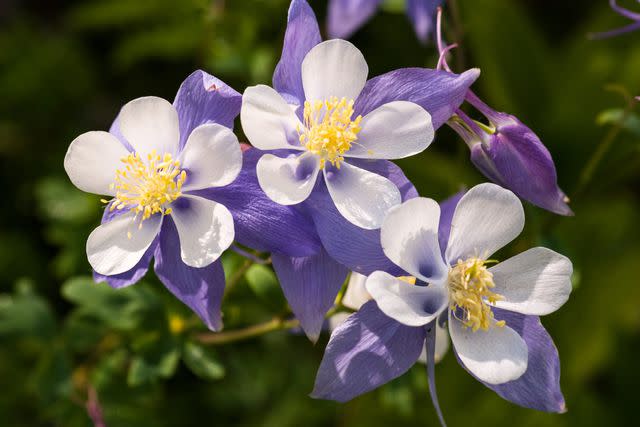
Columbines come in a range of oranges, reds, pinks, whites, and even yellow. Any variety will work in a shaded garden, but if you're looking for inspiration, turn to Corbett. The charming native plant forms drooping, pale-yellow flowers that are attractive to pollinators.
Zones: 3 to 8
Size: 18 inches tall
Growing Conditions: Partial to full shade; well-drained soil.
Phacelia
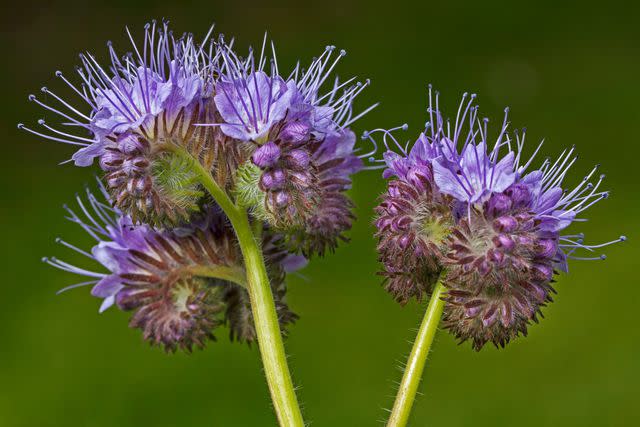
Great for filling gaps in your garden, phacelia is a native plant to the southeastern U.S. that self-sows freely once in your garden. "The lovely lavender flowers of phacelia are great for early spring pollinators and can quickly fill in large gaps in your garden," says Meholic. "It is aggressive and the foliage fades before summer."
Zones: 5 to 8
Size: 12 to 24 inches tall
Growing Conditions: Partial to full shade; tolerates most soil types.
Northern Maidenhair Fern

Maidenhair fern is an elegant perennial that's great for deeply shaded areas of your garden. "The foliage is a vibrant green and upon closer inspection, the jet-black stems add interest and coolness to any design," says Meholic. "The fronds are held in a semi-circle which gives it a fun shape that mixes well with other shade loving foliage plants."
Zones: 3 to 8
Size: 12 to 30 inches tall
Growing Conditions: Partial to full shade; moist, acidic soil.
Monkshood

This delicate climber is one of the latest native plants to flower in the garden, so it will add color to your landscape when most other perennials have faded for the season. "The large purple flowers are bell-shaped and look fantastic growing through shrubs or on a trellis," says Meholic.
Zones: 4 to 9
Size: Up to 60 inches tall
Growing Conditions: Partial to full shade; moist soil.
Green-and-gold
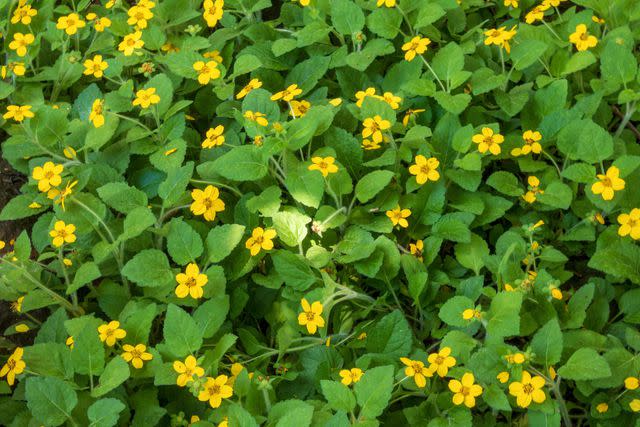
Ground covers are a low maintenance way to fill in gaps in your landscape, and green-and-gold is a shade loving variety that is easy to grow. "It flowers from May to October, with the sunny-yellow flowers most showy in summer," says Meholic. "This is a great filler plant in the garden to out-compete weeds and add brightness to any bed."
Zones: 5 to 9
Size: 6 to 12 inches tall
Growing Conditions: Partial to full shade; average, moist soil.
Foamflower Running Tapestry

Although foamflowers are traditionally slow growing, this variety provides a solution—and looks beautiful doing it. "It has a lovely green leaf with red accents that are most pronounced in winter," says Meholic. "The white flowers are a charming bonus in late spring."
Zones: 4 to 9
Size: 12 inches tall
Growing Conditions: Partial to full shade; average to rich, moist soil.
Lungwort

Lungwort solves a lot of problems in the landscape. "It provides a lovely silver-green foliage accent, a bright pop of purple-pink flowers in the spring, and is deer resistant," says Meholic. The low-maintenance plant generally takes care of itself and helps its neighboring plants look their best, too.
Zones: 4 to 9
Size: 10 inches tall
Growing Conditions: Partial to full shade; average garden soil.
Upright Wild Ginger
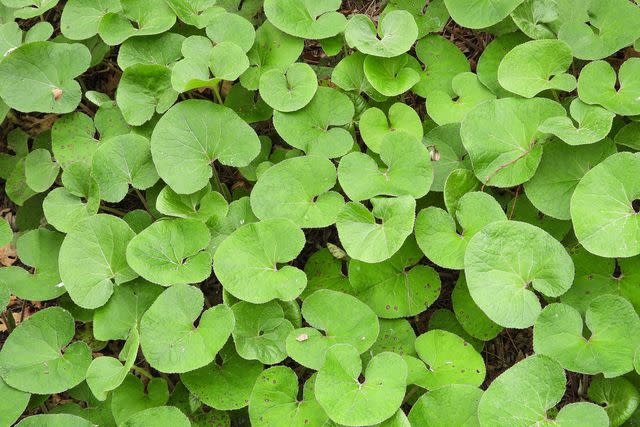
The fuzzy heart-shaped foliage of upright wild ginger will add welcome texture to your garden. It is is reminiscent of its close relative, Canadian wild ginger—but with one key difference. "Unlike Canadian wild ginger, the yellow flowers of upright wild ginger are held clearly above the foliage," says Meholic.
Zones: 5 to 8
Size: 12 to 18 inches tall
Growing Conditions: Partial to full shade; rich garden soil.

